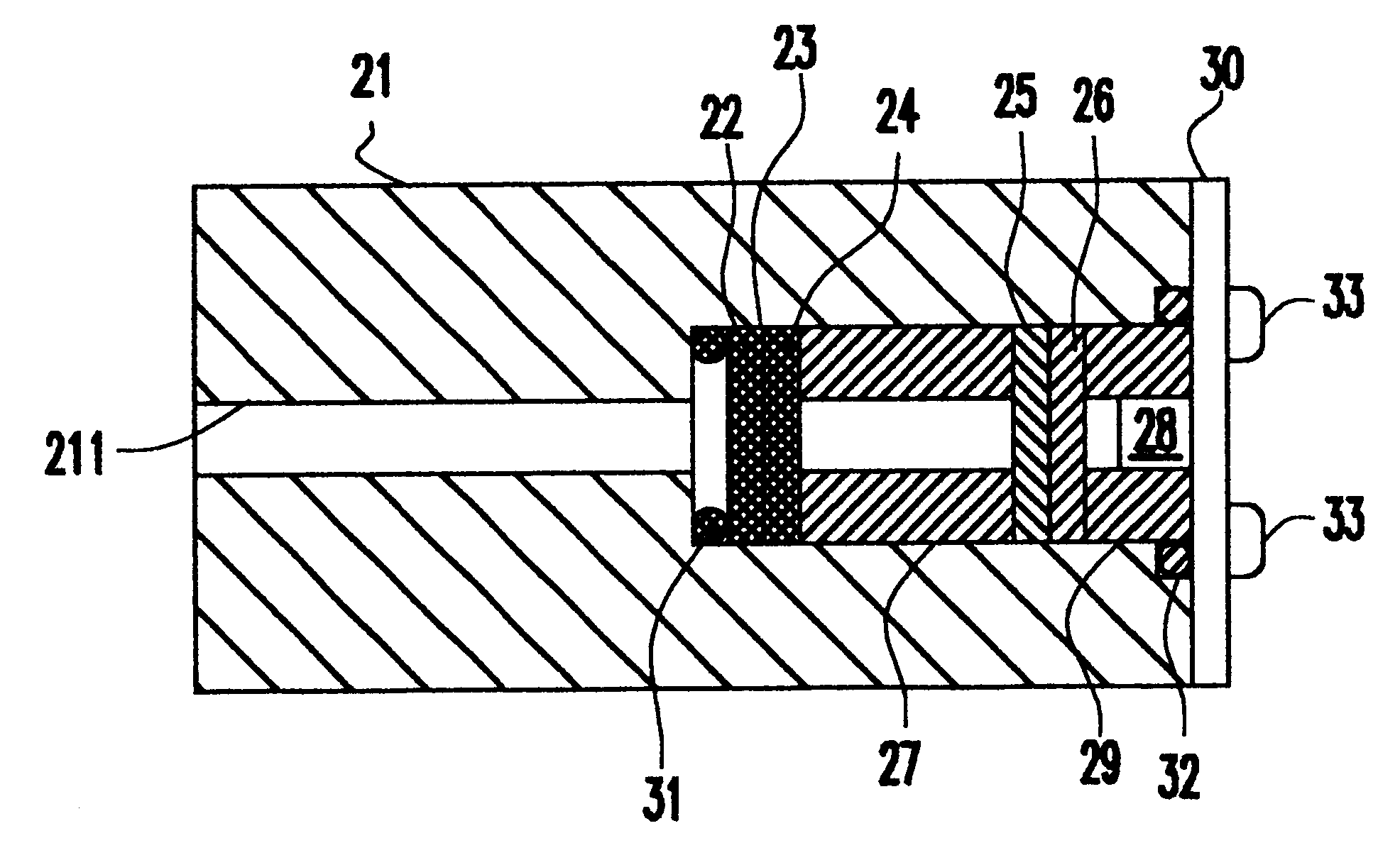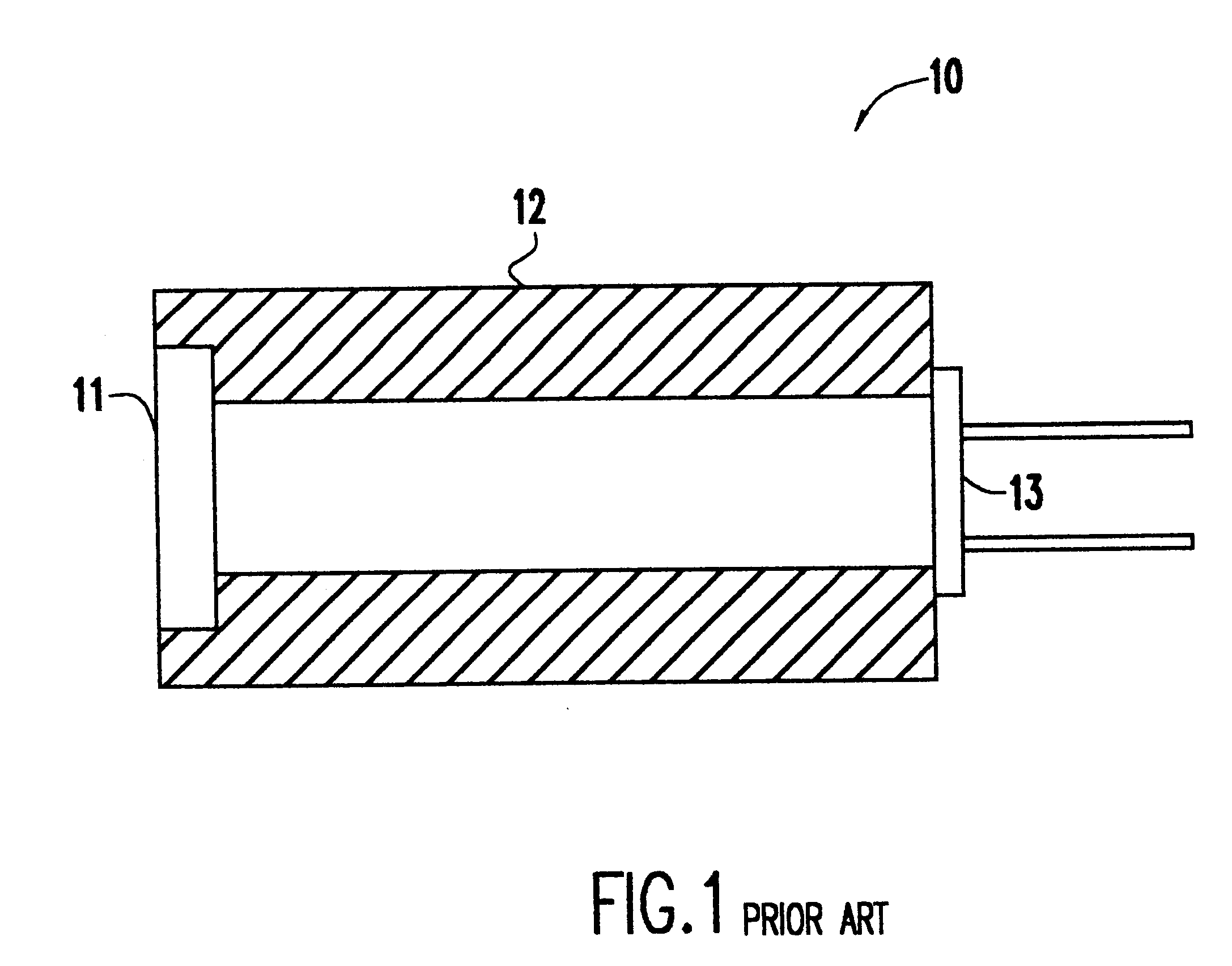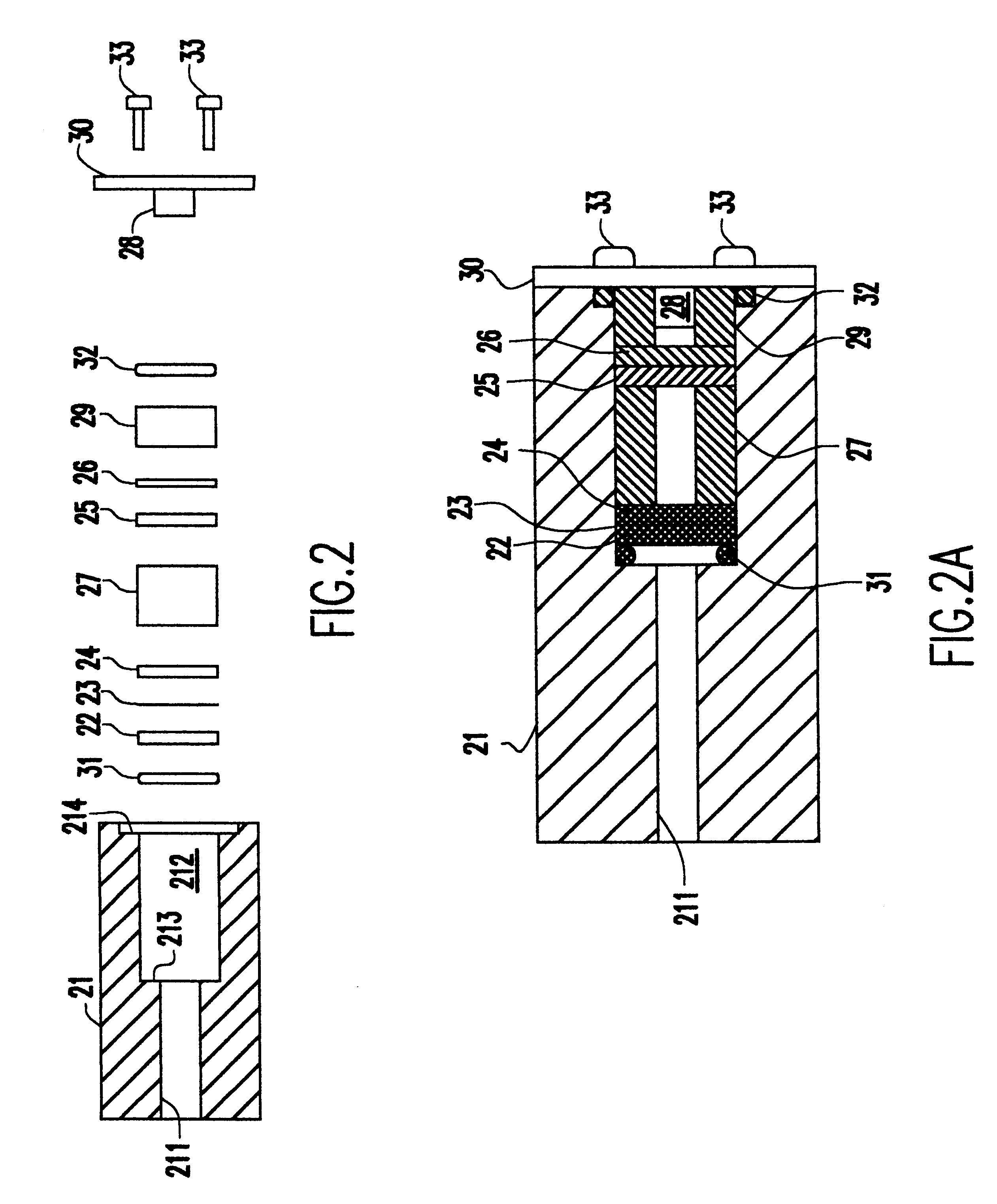UV sensor
a technology of ultraviolet light and sensor, applied in the field of ultraviolet light sensors, can solve the problems of changing the reading produced, aperture passing the rays with unattenuated intensity, and long-standing problems
- Summary
- Abstract
- Description
- Claims
- Application Information
AI Technical Summary
Problems solved by technology
Method used
Image
Examples
Embodiment Construction
Referring now to the drawings, and more particularly to FIG. 1, there is shown a representation of a typical UV sensor 10. UV light is passed through an optical filter 11 which rejects all wavelengths except those of interest. The filter 11 is contained within and at one end of a housing 12. At the other end of the housing 12 is a silicon photodetector 13, whose output is a current proportional to the number of photons striking it per unit time (intensity), which is the sensing element. While not part of this invention, the current from the sensor is converted to a voltage by an external circuit (not shown) and intensity is read as a numerical value on a voltage reading device (also not shown).
A typical very low solarization sensor design is shown in exploded cross-section in FIG. 2 and assembled in FIG. 2A. An aluminum housing 21, which contains the optical components, is mechanically oriented so that its viewing port 211 opening at one end of the housing is exposed to a UV source....
PUM
 Login to View More
Login to View More Abstract
Description
Claims
Application Information
 Login to View More
Login to View More - R&D
- Intellectual Property
- Life Sciences
- Materials
- Tech Scout
- Unparalleled Data Quality
- Higher Quality Content
- 60% Fewer Hallucinations
Browse by: Latest US Patents, China's latest patents, Technical Efficacy Thesaurus, Application Domain, Technology Topic, Popular Technical Reports.
© 2025 PatSnap. All rights reserved.Legal|Privacy policy|Modern Slavery Act Transparency Statement|Sitemap|About US| Contact US: help@patsnap.com



